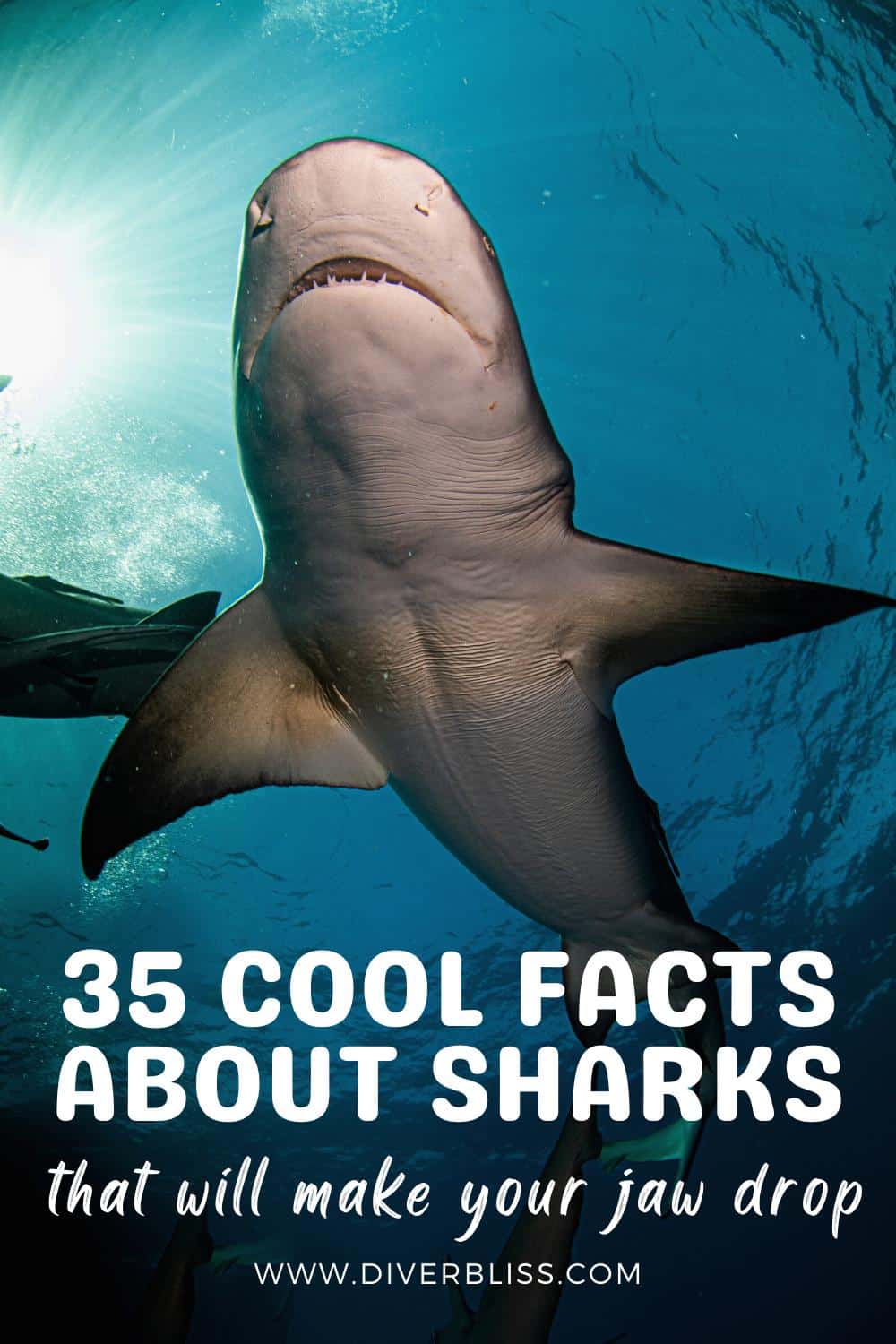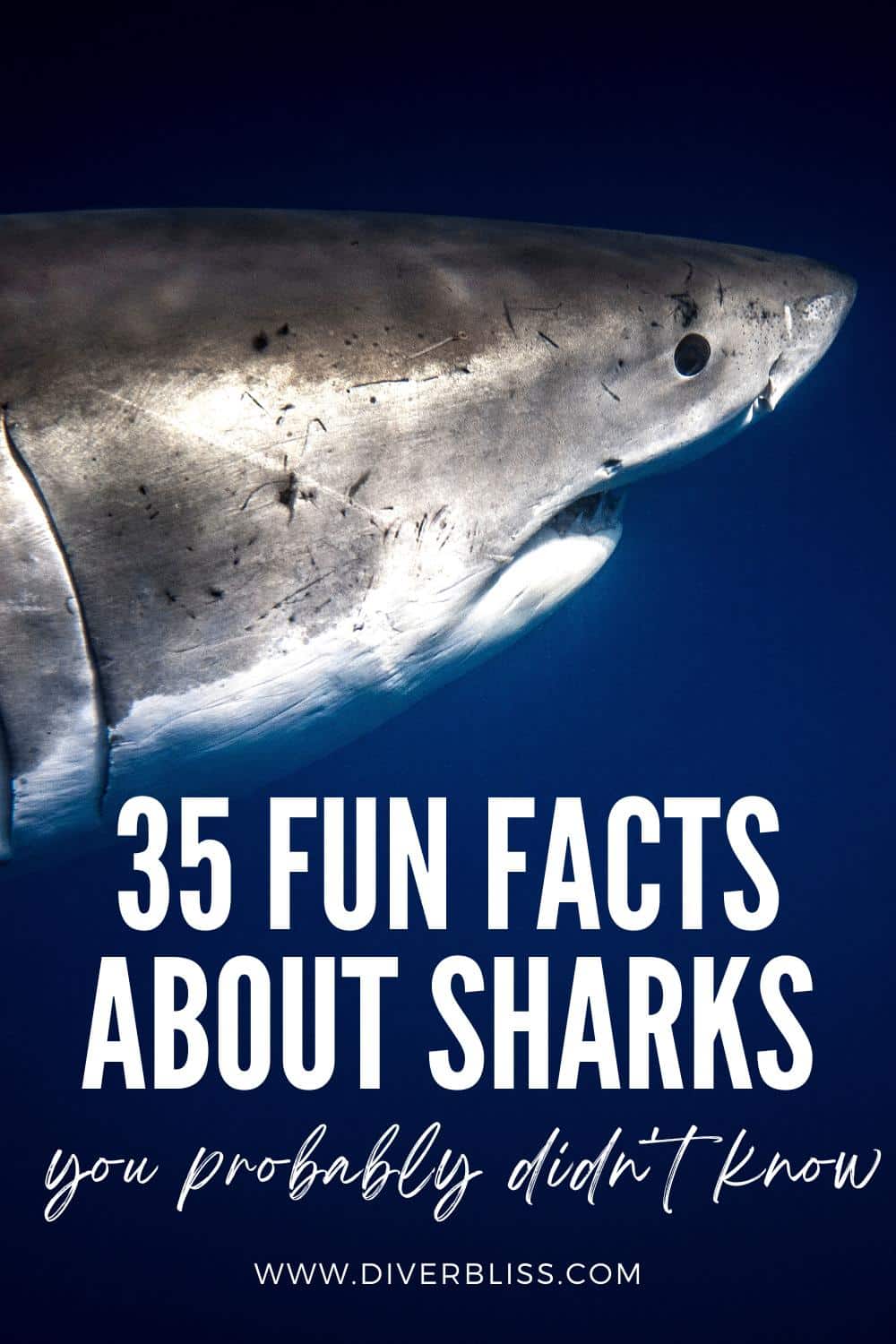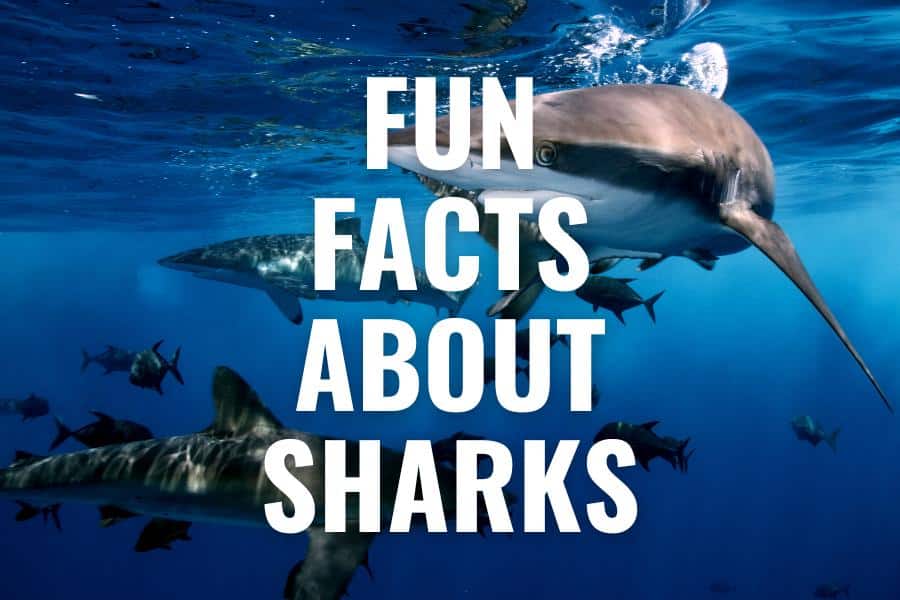Are you fascinated by sharks and want to learn more about these amazing animals? In this post, I’ve put together a list of fun facts about sharks.
Sharks are a diverse and fascinating group of animals that have interacted with humans for centuries. They have long been a part of human culture and have been revered and respected by many societies.
Sharks have played a significant role in mythology, art, and literature, and have been revered as powerful and mysterious creatures. They have also been valuable resource for humans, with many societies relying on sharks for food, medicine, and other resources.
Despite their importance in human culture, sharks have also faced many challenges, including overfishing and other human activities that have resulted in population declines. Sharks have a bad reputation for being aggressive and dangerous. Because of how the media portrays sharks, many people are afraid of them.
There are many interesting and surprising facts about sharks that you may not be aware of. Sharks are truly one of the most amazing animals on the planet, from their incredible senses and hunting abilities to their role in marine ecosystems.
We can help to reduce negative perceptions of sharks by educating ourselves about their true nature and the importance of sharks in marine ecosystems. The more we learn about sharks, the more easily we can protect and conserve them.
Continue reading to learn some cool facts about sharks.
- Sharks are a type of fish in the class Chondrichthyes, which is distinguished by their cartilaginous skeletons (made of cartilage rather than bone) and five to seven gill slits on the sides of their heads.
- There are over 500 different shark species, ranging in size from the small dwarflantern shark, which is about 8 inches (0.20 meters) long, to the massive whale shark, which can reach lengths of up to 40 feet (12.19 meters).
- Sharks have been around for over 400 million years, making them one of the oldest and most successful animal groups on the planet. They have survived numerous mass extinctions and have adapted to a wide range of marine environments, making them extremely resilient and adaptable.
- Sharks have keen senses that enable them to locate and capture prey, avoid predators, and navigate their surroundings. Sharks have an acute sense of smell, allowing them to detect even the most subtle odors in the water. They also have good vision and can see in low light and in murky conditions. Furthermore, sharks can detect electrical fields, allowing them to locate prey that is hidden in the sand or buried on the ocean floor. Sharks’ specialized senses enable them to be highly effective predators and to survive in their marine environment.
- Sharks, like all animals, require rest, but not in the same way that humans do. Sharks do not have eyelids and do not experience the same period of unconsciousness that humans do when they sleep. Sharks do, however, have periods of rest and reduced activity during which they may become less responsive to stimuli and move less.
- Many sharks are well-known for their powerful swimming abilities and ability to swim at high speeds. Some sharks, such as the shortfin mako shark and the great white shark, can swim at up to 60 miles per hour, making them among the fastest in the ocean.
- Sharks have rows of sharp, pointed teeth that they use to tear and grip prey. Throughout a shark’s life, these teeth are constantly replaced, with new teeth growing in to replace those that are lost or damaged. This process, known as tooth replacement or tooth turnover, helps sharks maintain sharp, functional teeth for hunting and feeding.
- Sharks can lose and replace thousands of teeth in their lifetime, with some species replacing teeth every week or two. Some species can grow up to 50,000 teeth in their lifetime.
- Sharks are a diverse group of animals, with vastly different behavior and feeding habits depending on the species.
- Some sharks, such as the great white shark and the tiger shark, are aggressive predators that hunt and kill a wide range of prey. These species are distinguished by their powerful jaws and sharp teeth, which they use to capture and consume prey such as fish, seals, and even larger marine mammals.
- Sharks that are not aggressive exist. The nurse shark, basking shark, and whale shark are all gentle creatures. These species have specialized adaptations, such as gill rakers or gill slits, that allow them to filter water and extract small prey from the water column, such as plankton, krill, and small fish.
- Sharks have cartilaginous skeletons, which means they lack the bones found in humans. Instead, their skeleton is made of elastic cartilage, which is more flexible and lighter than bone. This allows sharks to move through the water more easily and efficiently.
- Sharks can be found in every ocean on the planet, from icy polar regions to warm tropical waters.
- Most sharks are cold-blooded, which means their body temperature is controlled by the water around them.
- Sharks have a reputation for being dangerous to humans, but in reality, only a small number of shark species are known to attack humans, and most of these attacks are not fatal. The chances of being attacked by a shark are extremely low, with the chances estimated to be 1 in 3.7 million.
- Sharks are attracted to a wide range of smells, including blood, and may be drawn to the scent of human blood in the water. It should be noted, however, that sharks do not actively seek out human blood and are not naturally aggressive toward humans.
- Most shark attacks on humans are not fatal, and are typically the result of a shark mistaking a human for a preferred prey species. Sharks are sensitive to vibrations and movement in the water and may misinterpret a person’s splashing or kicking for the movement of a prey species like a fish or seal.
- According to the International Shark Attack File at the Florida Museum, there were 73 confirmed unprovoked shark bites and 11 unprovoked shark-related fatalities worldwide in 2021.
- Sharks reproduce slowly, with many species producing only a few offspring at a time. Many shark species have only a few offspring at a time, and some species may only reproduce once every few years.
- Sharks are also extremely long-lived animals, with many species living for decades or even centuries. This means it takes them a long time to mature sexually and reproduce, which may contribute to their slow reproductive rate.
- Shark mating behaviors can be violent, with males biting and ramming females to assert dominance and secure mating rights.
- Sharks reproduce using a variety of mating strategies, including internal and external fertilization. Internal fertilization occurs when a male shark inserts his claspers (modified pelvic fins) into the cloaca (reproductive tract) of a female shark to fertilize her eggs. External fertilization occurs when the male shark releases his sperm into the water and the female cloaca picks it up.
- Males and females of some shark species form long-term pair bonds and only mate with one partner. Males in other shark species are polygynous, mating with multiple females.
- Depending on the species, sharks reproduce in a variety of ways. Some sharks are oviparous, which means they lay eggs that hatch after they are laid. Other species are viviparous, which means they give birth to living young who are fed by their mother via a placenta. Ovoviviparity is the most common method of reproduction in sharks, in which the eggs hatch inside the mother’s body and the young are born alive.
- Many shark species have a lengthy gestation period, with some pups remaining in the womb for more than a year before birth.
- Sharks are apex predators, which means they are at the very top of the food chain. They aid in the control of other marine species’ populations, such as fish, seals, and marine mammals. Their presence or absence can have a domino effect on the entire ecosystem.
- Many shark species are threatened or endangered as a result of overfishing, habitat loss, and other human activities. Over a third of known shark species are listed as threatened by extinction by the International Union for Conservation of Nature (IUCN).
- Sharks are important indicators of the health of marine ecosystems, and their conservation can benefit other marine species as well as the ocean’s overall health. Sharks in healthy numbers can indicate that the ecosystem is functioning properly and that other species are flourishing.
- Sharks are frequently misunderstood and vilified in popular culture. Sharks’ bad reputation is frequently amplified by the media’s portrayal of sharks as villains in films and television shows. As a result, many people are afraid of sharks and may be unaware of their importance in marine ecosystems.
- Every year, an estimated 100 million sharks are killed around the world.
- Shark fin soup is a traditional dish in some cultures, and it is regarded as a symbol of wealth, prestige, and good fortune. Shark fin soup is served at special occasions such as weddings and business meetings in some cultures, as a symbol of respect and generosity. The demand for shark fin soup has led to the unsustainable and often cruel practice of shark finning, in which sharks are caught, their fins are removed, and the body is discarded back into the ocean.
- To protect shark populations, some countries have implemented regulations and bans on shark finning and the trade of shark products. Shark populations can be conserved through marine protected areas and sustainable fishing practices.
- Sharks can be tracked using a variety of techniques, such as satellite tagging, acoustic tagging, and DNA analysis. Shark tracking can provide valuable insights into shark biology and behavior, which can help to inform conservation efforts and management strategies.If you love the idea of being able to track sharks, you can buy a bracelet with a real shark to track.
- Many organizations and individuals are working to raise awareness about shark conservation and promote more sustainable practices.
- You can help save sharks by symbolically adopting one. This is a fantastic gift idea for shark lovers.



